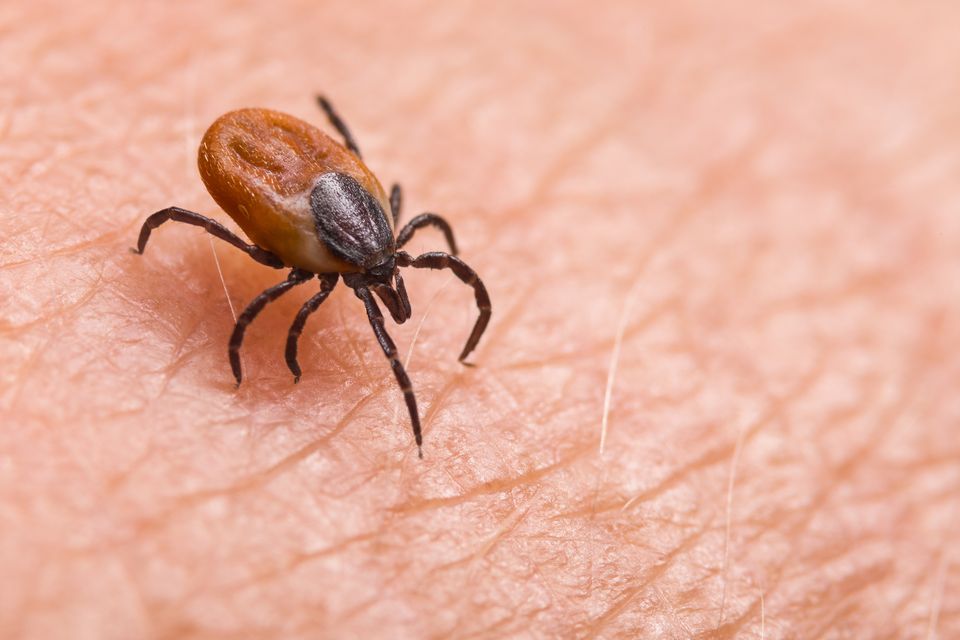HSE urges people to be aware of ticks as up to 400 people infected with Lyme disease every year in Ireland
A tick. Picture: Getty Images
The Health Protection Surveillance Centre (HPSC) has offered practical advice on how to protect against ticks, whose bite can cause a bacterial infection called Lyme disease.
Marking Tick Awareness Day on Wednesday, Consultant in Public Health Medicine, HSE National Health Protection, Dr Paul McKeown said anyone who spends time outdoors over the coming months should protect themselves against tick bites.
“People are more likely to spend time outdoors in the spring and summer months. This includes ramblers, campers, mountain bikers, people who work or walk in woodland, parkland and heathland, especially in grassy areas. Preventing tick bites prevents Lyme disease,” he said.
“From April onwards is the time when we expect to see cases of Lyme disease most frequently in Ireland, because this is when ticks are most plentiful.”
Today's News in 90 seconds - 30th April 2024
Ticks are present everywhere in Ireland, including both urban and rural areas and are active from spring to autumn. They are tiny spider-like creatures that feed on the blood of humans, animals and birds, and are more numerous and more active in the summer months.
The exact number of Lyme disease cases is not known. It is likely that there are at least 200 to 400 cases of the milder forms of Lyme disease in Ireland annually.
Tick bites can be prevented by wearing long trousers, long sleeved shirt and shoes, wearing a hat and tucking in hair, using an insect repellent (preferably containing DEET), checking skin, hair and warm skin folds (especially the neck and scalp of children) for ticks, after a day out checking for ticks and removing any from your pets/clothing/outdoor gear and removing any ticks and consulting with a GP if symptoms develop.
Ticks will bite adult humans most commonly on the legs and the arms. But they can bite on any part of the body, especially warm and sweaty parts of the body not covered by clothing. In children, ticks are most likely to bite around the head and neck.
These are the areas to cover up and protect. These are also the areas to check following time spent outdoors. You can check yourself and your children during the day.
Most cases of Lyme disease are very mild and many infected people may not have symptoms. The most common sign of infection is a skin rash (known as Bullseye rash or erythema migrans).
In a small number of cases however, the infection can be more severe, leading to serious nervous system, heart and joint disease.
“Anyone who develops a rash or other symptoms should visit their GP and explain that they have been bitten by a tick. If you think you may have been bitten by a tick and you develop a skin rash speak to your GP. Your GP may prescribe antibiotics if it is likely to be Lyme disease, which will clear the infection,” Dr McKeown said.
A minority of ticks can carry Lyme disease. If a tick is removed within the first number of hours, the risk of infection is very low.
The entire tick, including its mouthparts which might break off, should be removed with a tweezers by gripping it close to the skin. The skin where the tick was found should then be washed with soap and water and the area checked over the next few weeks for swelling or redness.
Step by step instructions with images on how to remove a tick are available on the HSE website.
Join the Irish Independent WhatsApp channel
Stay up to date with all the latest news















